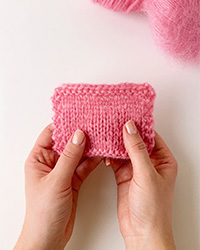Como aumentar malhas

Eis como aumentar uma malha levantando o fio entre 2 malhas da carreira precedente. Irá aparecer um pequeno buraco por baixo da nova malha
Fotografia 1: Tricotar as malhas até onde deve aumentar e criar a nova malha.
Fotografia 2: Passar a ponta da agulha esquerda da frente para trás e levantar o fio que está entre a malha da agulha esquerda e a malha da agulha direita.
Fotografia 3: Tem, agora, uma nova malha na agulha esquerda.
Fotografia 4: Enfiar a agulha direita na nova malha como se a fosse tricotar em meia e passar o fio pela malha.
Fotografia 5: Tricotou uma nova malha que está, agora, na agulha direita e pode passa-la para a agulha esquerda
Fotografia 6: Continuar e tricotar a malha seguinte da agulha esquerda.
Fotografia 7: Tricotar algumas carreiras e verá um pequeno buraco aparecer no local em que fez o aumento.
Esta maneira de fazer aumentos é um bom método para dar forma à sua peça. O buraco não será grande mas marcará os seus aumentos














De plaatjes en de tekst komen niet overeen. Plaatje 2 laat zien hoe een steek gemaakt wordt door de naald van achter naar voor te steken, terwijl de tekst het omgekeerde zegt. Ook wordt niet vermeld of er voor of achter in de lus gebreid moet worden en of dit een naar links of naar rechts vallende meerdering is.
19.03.2016 - 14:42